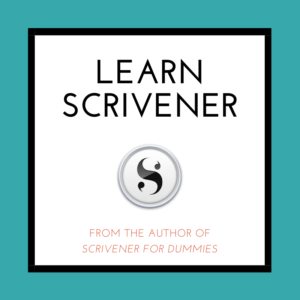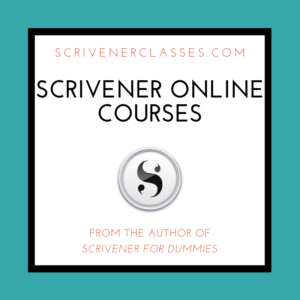I’m going to kick things off by getting straight to the point: power writing isn’t just another buzzword; it’s an actionable approach to infuse your content with energy and effectiveness. It’s about crafting pieces that resonate with people and stay true to your voice, all while delivering clear value.
You’re going to find out about the essence of creating content content that prioritizes your audience—we’re talking about people-first content here. This means always keeping the reader’s needs, questions, and interests at the center of your writing strategy.
In my opinion, the E-E-A-T principles – Experience, Expertise, Authoritativeness, and Trust – should be your guiding stars. But it’s not only about ticking these boxes; it’s about truly embedding these qualities into every line you write.
Now, what is a big player in all of this? SEO. Don’t worry too much about the technicalities for now. Just know that SEO can help your content reach the right eye without compromising the integrity and passion behind your words.
Choose something that resonates with you – that’s my advice when you decide on the topics and styles for your power writing. And remember, your first attempt doesn’t need to be perfect. It’s more important to start with a strong foundation and build from there.

Laying the Foundations: Know Your Audience
Effective power writing starts with a simple yet vital step: knowing who you’re talking to. This isn’t just about figuring out who might read your work; it’s about understanding what moves your audience, what problems they need to solve, and how they communicate.
So, how do you get into the minds of your readers? Start by conducting audience research. Dive into demographic data, social media conversations, and even competitors’ content to get a feel for what your audience is looking for. Build these insights into detailed personas that capture your ideal reader’s age, interests, pain points, and desires.
With these personas in hand, you can craft content that speaks directly to your audience. It’s a powerful way to ensure your message hits home. Tailoring content to meet audience needs means asking, ‘What can I offer that is both useful and engaging?’
At the end of the day, your content should provide a service to readers. It’s not just about sharing knowledge—it’s about doing so in a way that is accessible and compelling. Use feedback from your audience, coupled with concrete analytics, to gauge the effectiveness of your content and refine your approach.

Crafting a Magnetic Headline: Capture Attention
Creating a headline that grabs someone’s attention is like setting a hook in fishing – you need that initial interest to reel them in. Think of your headline as the first impression you make on your audience. It’s the deciding factor in whether they’ll read on or move along.
Tips for creating headlines that pack a punch can make all the times you hit the backspace key well worth it. Begin by being succinct and make every word count. Determine what emotion you want to evoke and choose words that amplify that feeling. Whether it’s curiosity, excitement, or urgency, the right emotional trigger can be a magnet for readers.
Using power words can transform a dull headline into a compelling one. These words are champions of persuasion and can significantly impact the click-through rates. They trigger an emotional or psychological response, making headlines more captivating.
SEO isn’t a secondary thought when it comes to headlines. You’ll want to weave in relevant keywords naturally. This practice helps your content’s visibility in search engine results, but always prioritize readability and the hook that’ll catch your reader.
Lastly, consider your headline as an implicit promise to your reader – it sets their expectations for what they’re about to discover. Make sure you can deliver on that promise with the content that follows, or you risk losing their trust and future interest.

Structuring Your Content for Maximum Impact
You’re probably aware that content needs to be not only informative but also easy to navigate. A large wall of text? That’s going to intimidate readers, causing them to bounce faster than a high-speed tennis ball. Breaking content into digestible chunks is where structuring for impact comes into play.
What does an impact-focused structure look like? Think of it as the framework of a house. It supports everything else. In writing, that means using headings and subheadings to guide your readers through the conversation. This isn’t just about aesthetics, it’s about allowing people to scan your content and still come away with the key points.
Bullet points and numbered lists? They’re your allies. These formatting elements break up the text and direct attention to your most important details. When you highlight the right information, you make the reader’s journey through your content a breeze.
Now, storytelling isn’t just for novels. It’s a powerful tool in the arsenal of a content creator. Integrating anecdotes or narratives, when appropriate, can help illustrate complex concepts, making them relatable and memorable. There’s a lot of opportunity to use stories to reinforce your message and connect on a deeper level with your readers.
Finally, balancing your content is crucial. You want to inform without overwhelming. That’s going to mean choosing the right level of detail for your audience. You want to ignite interest, not extinguish it with too much jargon or technical specifics. Stay clear, stay engaging, and watch as your readers do more than just visit—they engage.

Writing to Inform: The Pillars of E-E-A-T
In my opinion, a content strategy that doesn’t rest on the pillars of Experience, Expertise, Authoritativeness, and Trust, collectively known as E-E-A-T, is like a library without books \’ it may look the part, but it’s missing the substance. The E-E-A-T framework is your blueprint for establishing your content as not just informative but authoritative and trustworthy.
Don’t worry too much about jargon \’ experience simply means drawing on your real-world knowledge and examples. It’s the stories you tell and the lessons you’ve learned. The ‘Expertise’ part of E-E-A-T is where your specialized knowledge shines. You can always adjust your approach down the road, but make sure to demonstrate your depth of understanding of the topic.
Authoritativeness is the strength of your voice in your field. Choose something that resonates with you and your audience \’ it’s that unique angle or insight that sets you apart. And trust? That’s the core member of the E-E-A-T family. It comes from consistent, honest communication and backing up what you say with evidence and credentials.
Building trust through verified data and clear sourcing isn’t just a good practice; it’s crucial for retaining your audience. If you want to showcase authoritative content, include citations from well-regarded studies or quotes from industry experts.
At this point, you’re going to find out about weaving E-E-A-T throughout your content naturally. This isn’t just about dropping impressive facts; it’s also about explaining why they matter. Provide context around the data you share, and make sure the sources are accessible to your readers for further exploration.

The Art of Persuasion: Writing to Influence
If you want to turn your content into a beacon that guides readers to action, you need to master the art of persuasion. It’s not just about presenting facts; it’s about weaving them into a narrative that moves your audience. Let’s look at how persuasive power writing can transform indifferent readers into engaged advocates.
Persuasive writing hinges on an intimate dance between logic and emotion. To strike the right chord, it’s crucial to understand and employ rhetorical techniques. These time-tested methods, like ethos, pathos, and logos, can help you craft a message that resonates deeply with your readers. Ethos establishes your credibility, pathos appeals to emotions, and logos relies on logic and reason. Working seamlessly together, they can create a compelling argument that’s hard to resist.
However, these techniques can’t stand on their own — they require a foundation of credibility. To establish this, share your own insights, experiences, and quantifiable achievements. This doesn’t only show that you know what you’re talking about, but it also helps to build a bond of trust with your readers. Your authenticity is your ally here; weave it into every word you write.
Real-world examples and case studies can further underscore the power of your persuasion. Readers often look for proof in action, not just in theory. By showcasing how your advice or product has brought about positive change, you can turn skeptics into believers. It strengthens your argument and provides tangible evidence of success.
Remember, your goal isn’t to manipulate; it’s to convince. Persuasion in power writing is about aligning your readers’ needs with your message in a way that’s mutually beneficial. When done correctly, you’re not just winning an argument — you’re gaining loyal supporters for your ideas, services, or products.

Optimizing for the Reader and the Algorithm
You’re going to find out about walking that fine line between writing for your audience and appeasing the search engines. It involves understanding how these two can harmoniously coexist within your content. Let’s be clear, your primary focus should always be on the people you’re writing for – they are the ones who will read, share, and act on your information.
Prioritizing readability is non-negotiable. When content flows well and is easy to digest, readers are more likely to stay engaged. Break your content into short paragraphs, use subheadings to guide your readers through the text, and let’s not forget about bullet points and lists – they can be excellent for clarity.
Now, about SEO. Integrating keywords shouldn’t feel forced or out of place. In my opinion, the best approach is to sprinkle them naturally throughout your piece where they fit contextually. Too much focus on keywords can harm readability, which defeats the point of creating great content in the first place.
And here’s where mobile responsiveness comes into play. With more people accessing content on the go, if your site isn’t mobile-friendly, you’re possibly turning away a huge chunk of your audience. Accessibility goes beyond mobile-friendliness, though; it also means making your content usable for everyone, including those with disabilities. This isn’t just good practice – it’s a sign of a site that gives a damn.
In the next section, we’ll take a deep dive into the editing process. Polishing your content until it’s the best it can be is a crucial step you won’t want to overlook. After all, even the most thoughtful content can be sunk by distracting typos or convoluted sentences.

From Draft to Finished Piece: The Revision Process
I’m going to delve right into why editing isn’t just a final touch; it’s a crucial part of your power writing strategy. It’s the fine-tuning that can turn a good piece into something exceptional.
Self-review is your first line of defense against unclear messaging and ineffective content. Go through your draft with a critical eye, cut the fluff, and sharpen your points. Ask yourself if each sentence is necessary and if it contributes to your overall message.
Don’t shy away from seeking peer feedback. A fresh pair of eyes can catch errors you missed and provide insights you hadn’t considered. Collaborate with colleagues or join a writing group where you can exchange critiques.
Leverage professional editing tools for grammar and style checking. Tools like Grammarly or ProWritingAid can provide valuable suggestions that you might overlook. Just remember to use them as aids, not replacements for your judgment.
Finally, make sure every revision aligns with your power writing strategy. It’s not just about fixing errors; it’s about ensuring your writing is engaging and powerful, adhering to E-E-A-T principles, and optimized for SEO without compromising readability.
As you transition to the next section on measuring success, keep in mind that the revision process is also a learning tool. By analyzing which changes made a difference, you can refine your strategy over time, enhancing your ability to create impactful and engaging content.

Continuously Crafting Your Power Writing Technique
So, you’ve journeyed through the ins and outs of creating an engaging power writing strategy. By now, I hope you’ve got a strong grasp on the concepts that drive the creation of impactful and valuable content.
Remember, your writing is an extension of your knowledge and passion. It’s not a one-off task but a continuously evolving process. Each piece of content is an opportunity to sharpen your skills, connect with your audience, and build a lasting impression.
The strategies we’ve discussed aren’t just theories; they are actionable steps designed to breathe life into your words and ideas. They’re grounded in the E-E-A-T principles that prioritize your audience’s experience and foster trust.
But this isn’t the end of the road. Far from it. As you apply these techniques, keep an eye on how your audience responds. Dive into analytics – not just as numbers, but as a narrative of what works and what resonates.
Adjust your course when necessary. If something isn’t clicking, it’s an invitation to try something new, not a sign to give up. Your first draft isn’t your destiny; it’s the starting point of a conversation with your readers.
So, go ahead. Write boldly, write with purpose, and most importantly, write with your reader in mind. The power of your words lies in their ability to inform, inspire, and invoke action.
Keep honing your strategy, keep engaging with your audience, and keep setting the bar higher for your content. I’ll be rooting for you every step of the way.
I’d love to hear your feedback on the strategies outlined in this article. Have they sparked new ideas? Do you have success stories or challenges to share? Drop your thoughts, and let’s keep the dialogue alive. Here’s to your power writing success!
As a wordsmith seeking to enhance your writing prowess, you’ll find many remarkable writing tools and apps at your disposal. Let’s explore some of the best options:
- Scrivener: A beloved companion for authors, Scrivener offers a treasure trove of features. It helps you track plot threads, store character notes, structure your work, and—most importantly—get serious writing done. While it’s not free, the investment is worth it for serious writers.
- Ulysses: If distraction-free writing is your goal, Ulysses is your muse. Its minimalist interface allows you to focus solely on your words. Plus, it syncs seamlessly across devices, ensuring your creativity flows wherever you are.
- iA Writer: Ideal for online writing (think Medium or WordPress), iA Writer combines simplicity with elegance. Its clean design encourages a flow state, making it a favorite among bloggers and content creators.
- Plottr: For those who thrive on outlining, Plottr is a gem. It helps you map out your novel, organize scenes, and keep your plot threads in check. Whether you’re a pantser or a plotter, Plottr has your back.
- Reedsy Book Editor: If you’re working on a book, Reedsy’s online editor is a fantastic choice. It’s free, collaborative, and offers a straightforward interface for drafting and editing your masterpiece.
- yWriter: Scene-based writers rejoice! yWriter lets you organize your novel into scenes, track characters, and maintain a bird’s-eye view of your work. It’s a powerful tool for structuring your narrative.
Remember, the best writing app is the one that aligns with your unique needs and writing style. Whether you’re crafting screenplays, novels, or blog posts, these tools will be your trusty companions on your literary journey.
Unlock Your Writing Potential with Scrivener
So, you’ve journeyed through the ins and outs of creating an engaging power writing strategy. By now, I hope you’ve got a strong grasp on the concepts that drive the creation of impactful and valuable content. But what if I told you there’s a tool that can streamline your writing process, making it even more efficient and organized? Enter Scrivener.
What is Scrivener?
Scrivener is more than just a word processor; it’s a comprehensive writing studio designed to meet the needs of writers across all genres. Whether you’re working on a novel, an academic paper, or the kind of power writing we’ve been discussing, Scrivener provides a robust set of tools to help you bring your ideas to life.
Why Scrivener is Perfect for Power Writing
1. Organizational Powerhouse
Scrivener lets you break your project into manageable sections, making it easier to tackle large documents without feeling overwhelmed. You can move sections around quickly, view your project as an outline, and keep track of research materials all in one place.
2. Enhanced Focus
Scrivener’s distraction-free writing mode helps you focus on your writing. This mode removes clutter so that you can concentrate solely on your words and ideas.
3. Versatile and Flexible
Scrivener supports a variety of writing styles and formats, allowing you to customize your workspace to suit your specific needs. Whether you prefer outlining before you start or writing in a free-form style, Scrivener adapts to your workflow.
4. Built-in Research Tools
Keep all your research, notes, and references within reach. Scrivener’s split-screen mode lets you view your research alongside your writing, ensuring you always keep track of your sources.
5. Compilation Options
When your project is ready, Scrivener makes it easy to compile your work into different formats: a manuscript, a PDF, or a web page. This flexibility benefits power writers who are adapting content for various platforms and audiences.
How Scrivener Enhances Your Writing Strategy
1. Streamlined Workflow
By integrating all aspects of your writing process into one application, Scrivener helps you maintain a smooth and efficient workflow. You can draft, revise, and finalize your work without leaving the platform.
2. Goal Setting and Progress Tracking
Scrivener allows you to set writing targets and track your progress. This feature is invaluable for staying motivated and ensuring you meet your deadlines.
3. Rich Text Capabilities
Scrivener’s text editor is equipped with a wide range of formatting options, allowing you to create professional, polished documents. You can also use its corkboard and outliner views to organize your project visually.
4. Collaboration Friendly
Suppose you’re working with a team or need to share your work with editors. In that case, Scrivener’s collaboration tools make it easy to manage feedback and revisions.
Ready to Take the Next Step?
Investing in the right tools can make a difference in your writing journey. Scrivener is designed to support you at every step, from the initial brainstorming sessions to the final draft. Its powerful features help you stay organized, focused, and productive, enabling you to craft content that resonates with your audience and meets the highest standards of E-E-A-T principles.
So, what are you waiting for? Elevate your writing game and transform your process with Scrivener. Whether you’re writing blog posts, crafting a novel, or developing a comprehensive content strategy, Scrivener is the tool that will help you achieve your goals.
Get started with Scrivener today and discover the ultimate writing studio for all your content creation needs. Click here to learn more and begin your free trial!
Thank you for joining me in exploring the best practices for power writing. I hope these insights and Scrivener’s power empower you to take your writing to new heights. Happy writing!
Beyond Words on a Page
Kevin



